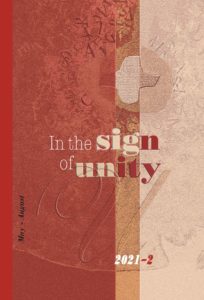Our story is related
To keep alive among the early sisters an enthusiastic interest in history, Fr Angelo Bosio encouraged them to get together at the end of the day and talk of “family things”.
The writing of the Institute’s history was soon thought of, because interest in its roots and traditions has always been cultivated: it was always understood that – as Mother Angelamaria affirmed – “history is sacred: God’s grace for us flows within it, and we can also draw from it vitality and vigour for today”.
Publications that were issued from time to time confirm that the Institute has always had a sense of God dwelling in its history.
In the last few decades some of them have been rewritten in current style, and research work has been carried out on the spirituality and mission of the Institute.

M. CARRARO – A. MASCOTTI,
L’Istituto delle Sante Bartolomea Capitanio e Vincenza Gerosa,
I vol, Milano, 1987.
The history of the Institute is presented in two volumes: in the unfolding of events recorded along a scientifically-correct method, there emerges God’s action in history and the response to it acted out in faith and charity by sisters who have gone before us.
Volume I covers the whole period from the foundation of the Institute right up to the pre-War I years. What happened within the Institute “from the moment it was conceived and brought forth by the Foundress till its complete development into a solid, organized structure” is intertwined with the story of its expansion within its territorial bounds and towards other continents, side by side with the taking up of increasingly numerous activities.
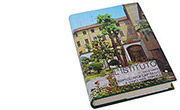
M. CARRARO – A. MASCOTTI,
L’Istituto delle Sante Bartolomea Capitanio e Vincenza Gerosa,
II vol, Peschiera Borromeo (MI), 1996.
Volume II ushers us into the early twentieth century and leads us on to the threshold of Vatican Council II.
Occupying a large part of this stretch of history are the tragic events of World Wars I and II, which put to the test the sisters’ capacity for self-dedication in military hospitals, refugee camps, and in everyday assistance to the countless poor, to orphans and sick people.
In the ordeal the Institute grew in number and expanded to other parts of the world, and was also strengthened in spirit. And with the early ferments of renewal that announced Vatican II, it promptly examined itself, seeking an adequate response to new demands.
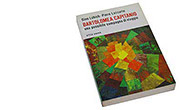
G. LUBICH – P. LAZZARIN,
Bartolomea Capitanio, una possibile compagna di viaggio
Roma, 1982
The life of Bartolomea Capitanio is described as “a very small story”, unfolding itself on the one “rule of love”. The book makes smooth, pleasant reading: it presents a young girl with an upward look as in her portrait, eager to receive light so as to transmit it to everyone . The account is very vivid, giving readers the feeling that she is right by their side, a companion along their way.
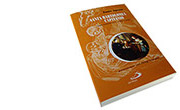
ENNIO APECITI
Santa Bartolomea Capitanio,”Quella benedetta carità … troppo mi piace”
Edizioni San Paolo, 2011
This is a new biography of the young girl, Bartolomea Capitanio, written by Mgr Ennio Apeciti. He describes how one day she was surprised by love: God’s infinite love for her; she was so thrilled by the discovery that she devoted her whole life to the sharing of the joy and beauty of that Love with those around her. The author ends his biography with this question: Bartolomea believed in Love; why don’t we believe in it? Don’t you think it’s worth it, worth trying at least? Let’s try; one thing we do know: “All that God, infinite Love, expects is that we do try, because He finds delight in loving even more than in being loved”.

G. LUBICH – P. LAZZARIN,
Vincenza Gerosa, la “sciura” della carità,
Roma, 1982
It is presented as a charming story of the “fioretti” type: Vincenza Gerosa is the personification of humble and silent laboriosity, a true “lady of charity” who gives in the gospel style of “do not let your left hand know what the right hand is doing”. Her sole concern is that of doing well what God wants from her. And in the end, what God wants from her is that she takes charge of the Institute which Bartolomea Capitanio entrusts to her on her deathbed, barely eight months after founding it.

CRISTINA SICCARDI
Vincenza Gerosa, va’ e anche tu fa’ lo stesso
Edizioni San Paolo, 2005
Caterina Gerosa (as a religious Sr. Vincenza) joined Bartolomea Capitanio in an extraordinary adventure of ‘charity’ (love of God). In the Preface to the book, Cardinal Carlo Maria Martini speaks of Bartolomea as the ‘creative prophecy’ that led to the founding of the new Institute, and of Caterina as the ‘patience that made it grow’; without Caterina’s patience the Institute could not have developed after Bartolomea’s untimely death, at the age of 26. They are two Saints who are inseparable though so different in age and temperament. One in Love, they were a visible sign and living expression of the ‘Charity’ of our most lovable Redeemer. “He who knows the Crucified Lords, knows everything”. In these words we find the wisdom-of-life of Sr. Vincenza, as she herself lived it and passed it on to us as a precious heritage.

U. VANNI – G. MOIOLI – C. KERSBAMER,
Faccia il Redentore che siamo sue vere seguaci,
Milano, 1983
This booklet provides deep insights into the charismatic intuition on which the Institute holds together: an Institute that was meant by Bartolomea to be totally centred in the mystery of the Redeemer’s charity. It came to light as a result of the Institute’s commitment to renewal, but remains a valid means to shed light on our identity as sisters of charity who aspire to live and work as Jesus did on earth.
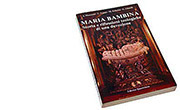
A. MASCOTTI – U. VANNI – M. ERBETTA – G. GHARIB,
Maria Bambina, Storia e riflessioni teologiche di una devozione,
Brescia, 1986.
A visit from John Paul II to the santuario of Maria Bambina, Milan, in 1984 prompted and urged the publication of a book on the story of this devotion in the Institute together with theological reflections on the mystery of the Blessed Virgin, particularly of her birth and infancy. As the Pope said, this is a chapter in Marian devotion which is “of special importance for our contemplation and spirituality”.
Opuscoli
Lighter publications (booklets, pamphlets, comics…) spread knowledge on Bartolomea and Vincenza and on their message of gospel life; they are useful aids to foster Christian living among children, help young boys and girls to make vocational choices-for-life, and stimulate faith-experience and practice of charity among everyone.
 V. MOSCA, Bartolomea Capitanio, operosa nella carità,
V. MOSCA, Bartolomea Capitanio, operosa nella carità,
Milano 2000
ITALIANO | ENGLISH | PORTUGUESE | ESPAÑOL
 V. MOSCA,
V. MOSCA,
Vincenza Gerosa, umile nel servire,
Milano 2000
versione italiana | English version | versão portuguese | versión española
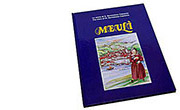 G. DANIELI,
G. DANIELI,
Meulì,
Vicenza, 1991
 G. DANIELI,
G. DANIELI,
Caterina, l’amica di Meulì,
Milano, 1996
 R. FUSCO – S. PIAZZA,
R. FUSCO – S. PIAZZA,
Per gli amici ìluem,
Lissone (MI), 2000
 A. MASCOTTI,
A. MASCOTTI,
Bartolomea Capitanio, il coraggio dell’amore,
Leumann (TO), 2000
 A. MASCOTTI,
A. MASCOTTI,
Vincenza Gerosa, grembiule e zoccoli,
Leumann (TO), 2003
 G. FACCO,
G. FACCO,
Bartolomea Capitanio,
Padova, 1981
 R. FUSCO,
R. FUSCO,
Kathedream (Il Sogno di Caterina),
2003
Periodical and Monthly paper
In our Institute care towards sisters’ human-spiritual growth as well as their professional qualification has always constituted one of the prime formative objectives. Among the many means used to pursue such a goal there is the attention to dissemination of publications; one of them is the quartly Periodical.
Monthly Paper: News/Information, for a prompt communication of news
Periodical: In the Sign of Unity
«In the Sign of Unity» recalls its fifty years
Short historical excursus – (download PDF)

